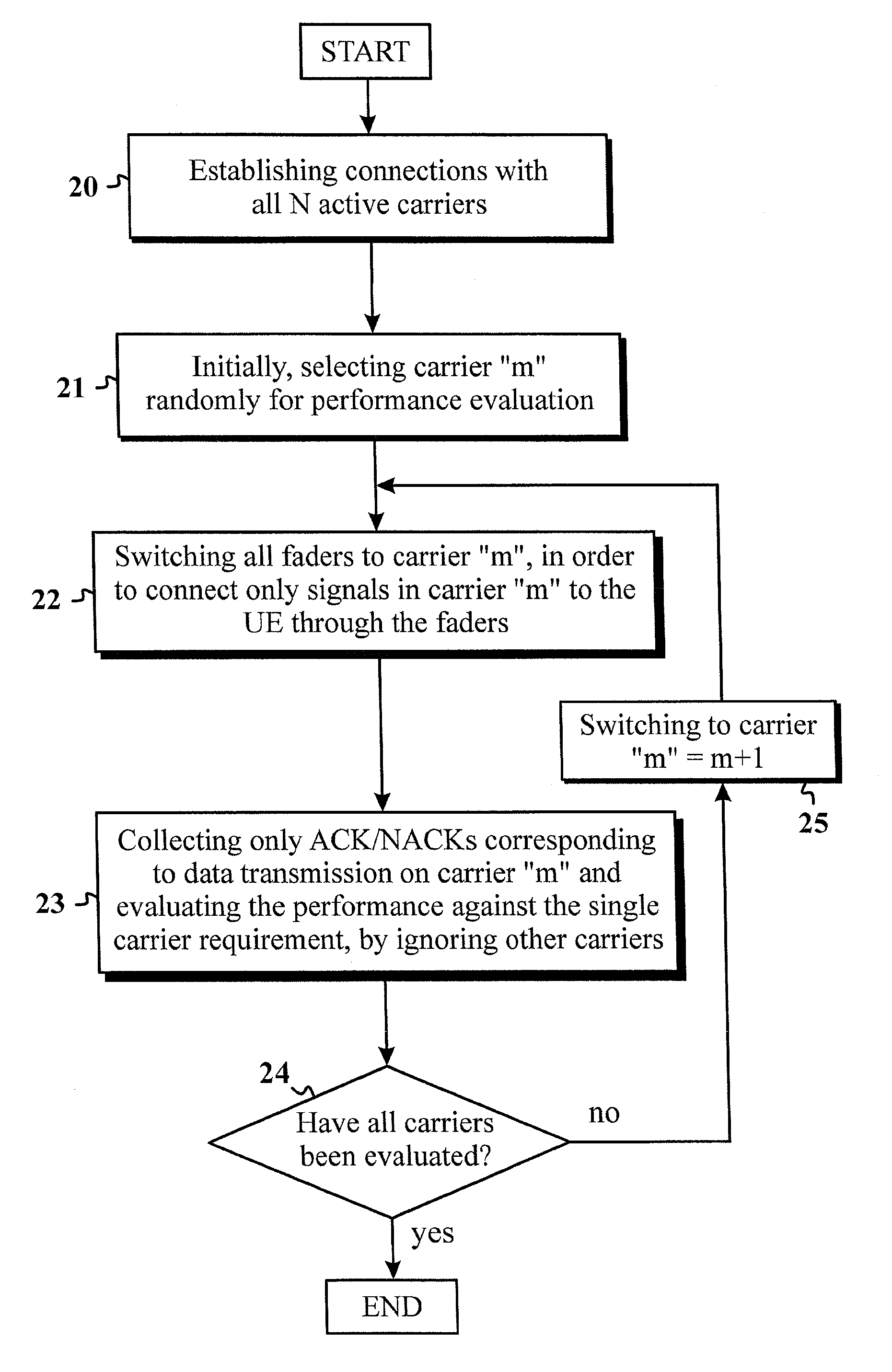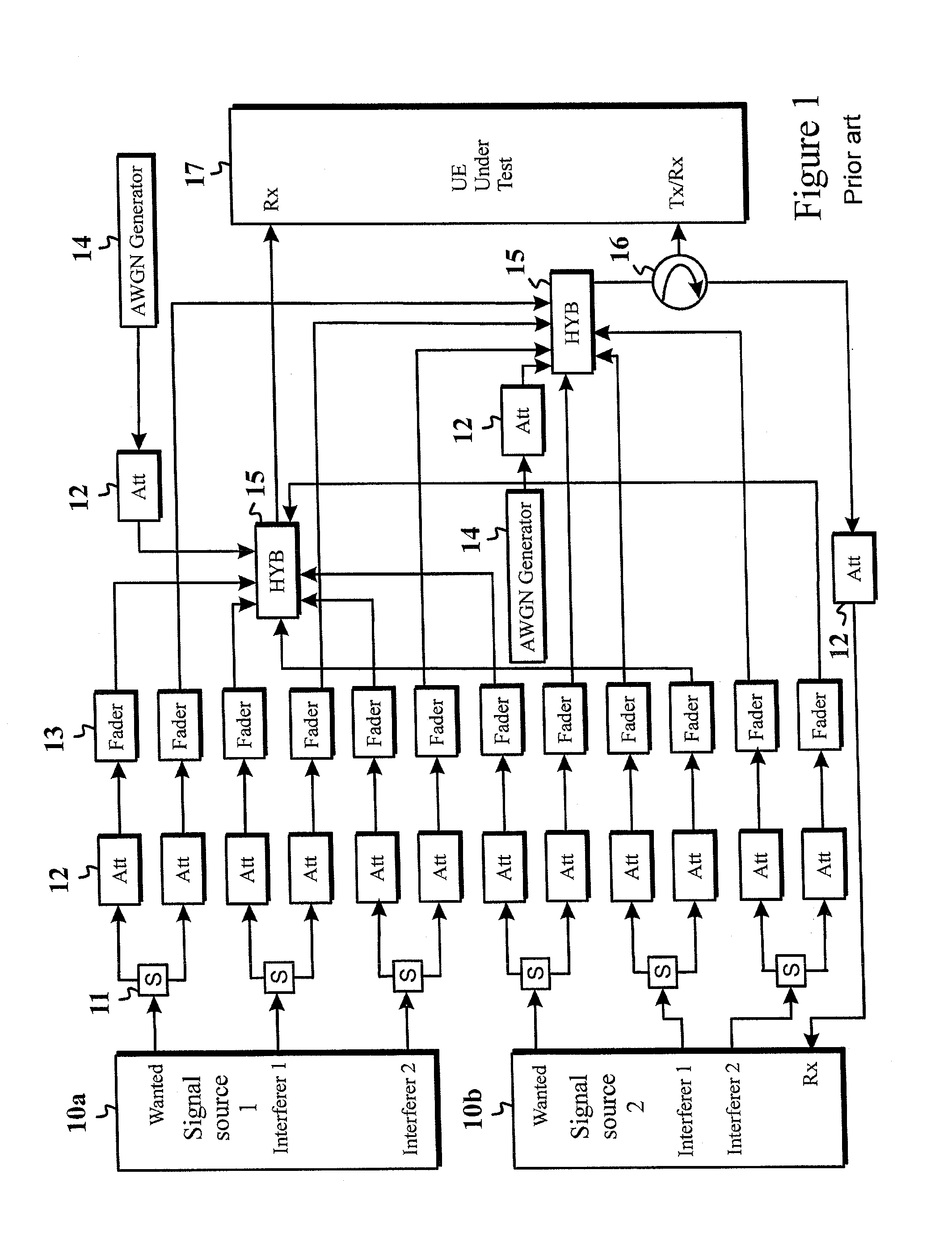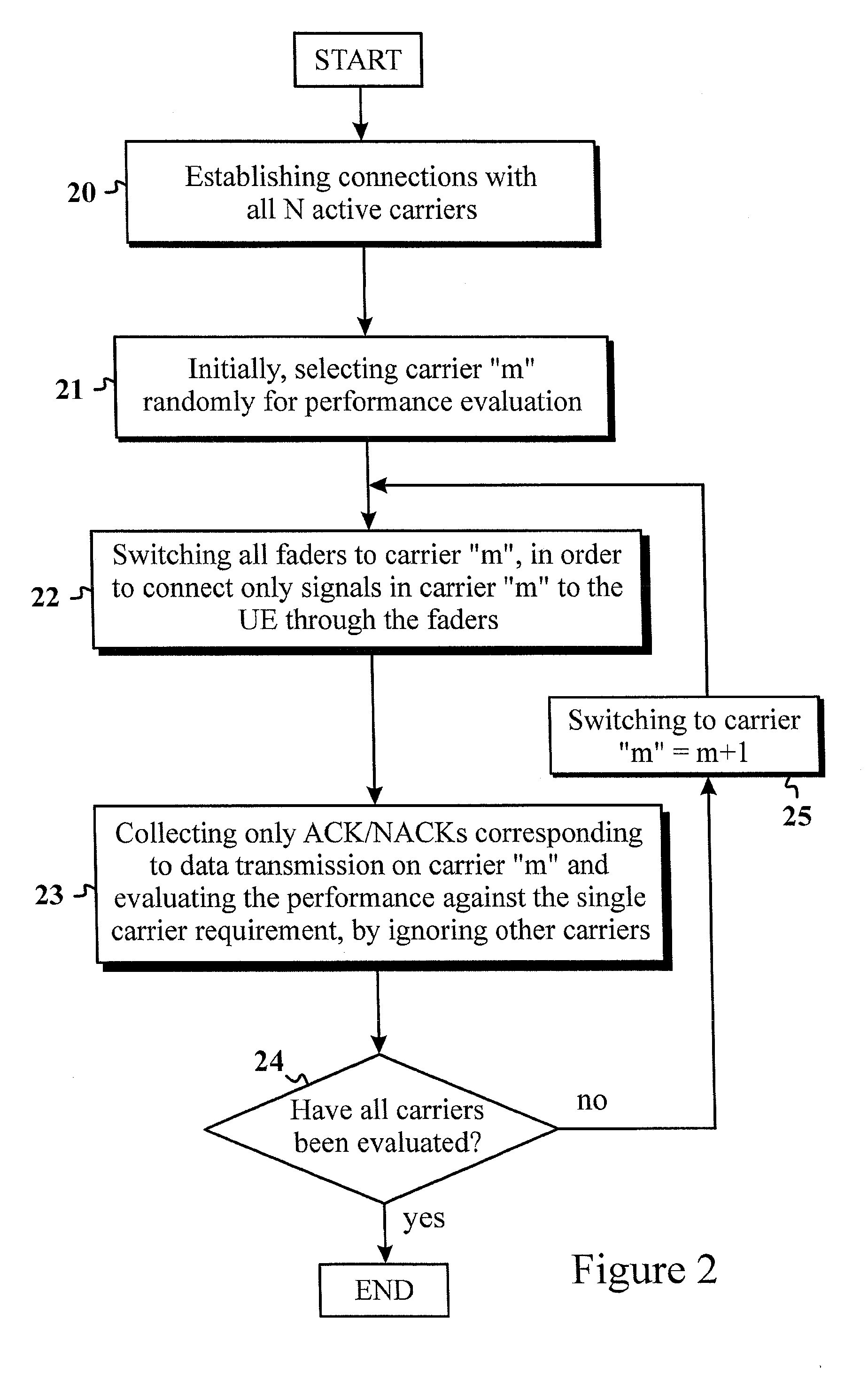Test Method for Type 3I Receiver in Multicarrier Configuration
a receiver and multi-carrier technology, applied in the field of mobile communication networks, can solve the problems of carrier complexity, unsuitable test setup according to r5-104591, and unwanted periodicity in time domain
- Summary
- Abstract
- Description
- Claims
- Application Information
AI Technical Summary
Benefits of technology
Problems solved by technology
Method used
Image
Examples
Embodiment Construction
[0041]Reference will now be made in detail to the embodiments of the present invention, examples of which are illustrated in the accompanying drawings.
[0042]The present invention handles performance testing for 3GPP User Equipment in multicarrier configuration.
[0043]Considering current requirements for all demodulation tests of an UE with multicarrier operation, it is notable that they are based on scaling the throughput requirement for a single carrier. In other words, in case the requirement for a single carrier throughput is R kbps, then the corresponding throughput requirement for dual carrier operation is 2R. This principle allows using the same testing techniques for both the single and dual carrier configurations. However, by building the testing module as in FIG. 1, we see that with greater number of carriers the configuration will be severely complex and expensive. This is particularly true in validating the type 3i receivers.
[0044]Furthermore, considering a basic property ...
PUM
 Login to View More
Login to View More Abstract
Description
Claims
Application Information
 Login to View More
Login to View More - R&D
- Intellectual Property
- Life Sciences
- Materials
- Tech Scout
- Unparalleled Data Quality
- Higher Quality Content
- 60% Fewer Hallucinations
Browse by: Latest US Patents, China's latest patents, Technical Efficacy Thesaurus, Application Domain, Technology Topic, Popular Technical Reports.
© 2025 PatSnap. All rights reserved.Legal|Privacy policy|Modern Slavery Act Transparency Statement|Sitemap|About US| Contact US: help@patsnap.com



